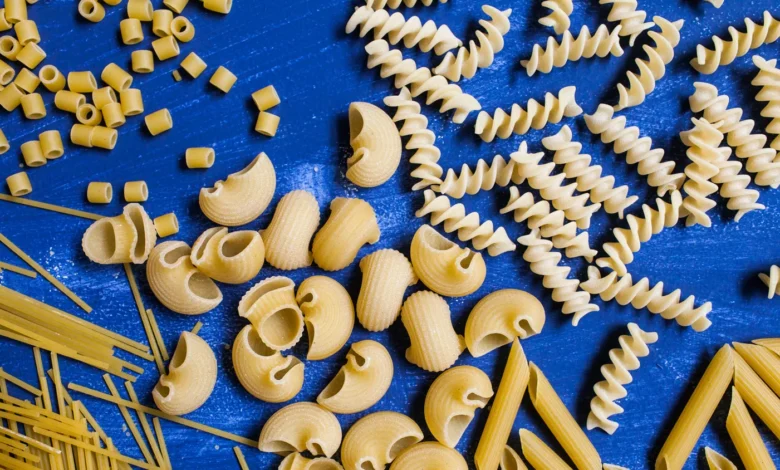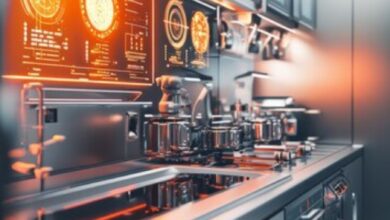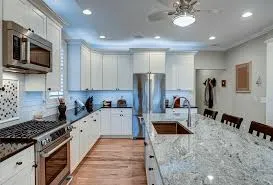What are the Different Types of Noodle Boxes?

Noodles are a popular choice for takeout and delivery, and as their demand has grown, so has the variety of packaging used to serve them. Noodle boxes, designed specifically for packaging and transporting noodle dishes, play an essential role in maintaining food quality, preventing leaks, and enhancing convenience. In this article, we’ll explore the various types of noodle boxes available, their materials, and the benefits of each.
What are Noodle Boxes?
Noodle boxes are containers specifically designed to hold noodle-based dishes for takeout, delivery, or to-go orders. These boxes are crafted to retain heat, prevent spills, and are typically portable, making them ideal for busy restaurants and food trucks. Beyond functionality, noodle boxes also contribute to branding and customer satisfaction, offering convenience and promoting a positive dining experience.
Types of Noodle Boxes Based on Materials
The materials used for noodle boxes vary, with each offering its own benefits and drawbacks. Here’s a breakdown of the most common types:
Paper Boxes for Food
Paper noodle boxes are the most popular and environmentally friendly option. These boxes are typically made from food-grade paperboard, which is lightweight, durable, and can be customized to feature unique branding. Paper box for food are easy to recycle and often biodegradable, making them an excellent choice for eco-conscious consumers.
Pros:
- Sustainable and eco-friendly
- Lightweight and easy to transport
- Customizable for branding purposes
Cons:
- Not always leak-proof without coatings
- May not retain heat as well as other materials
Plastic Noodle Boxes
Plastic noodle boxes are another option commonly used for takeout. These boxes are durable and often come with tight-sealing lids, making them ideal for transporting hot and saucy dishes. However, the environmental impact of plastic packaging is a concern, as not all plastics are easily recyclable.
Pros:
- Sturdy and leak-proof
- Can be reused
- Excellent heat retention
Cons:
- Less environmentally friendly
- Can take longer to decompose
Aluminum Noodle Boxes
Aluminum noodle boxes are known for their excellent heat retention, making them a preferred choice for dishes that need to stay warm for extended periods. Aluminum is also fully recyclable, but these containers may not be as visually appealing or customizable as paper boxes.
Pros:
- Great for heat retention
- Recyclable
Cons:
- Limited customization options
- Heavier than paper or plastic
Traditional Foldable Paper Noodle Boxes
The iconic foldable paper noodle box, often associated with Chinese takeout, is a classic in the food packaging world. These boxes are compact, easy to assemble, and designed with foldable flaps that keep the food secure without the need for extra lids. Their efficient design makes them a favorite for restaurants that serve noodle dishes.
Advantages:
- Space-efficient and easy to transport
- Great for takeout and delivery
- Often used as a branding tool
Biodegradable and Eco-Friendly Noodle Boxes
With growing concerns about environmental impact, biodegradable noodle boxes have become increasingly popular. These boxes are typically made from plant-based materials like bamboo, cornstarch, or sugarcane fibers. They break down naturally, leaving less waste, making them ideal for environmentally-conscious restaurants.
Benefits:
- Compostable and biodegradable
- Made from renewable resources
- Non-toxic and safe for food
Microwave-Safe Noodle Boxes
For consumers who prefer to reheat their takeout, microwave-safe noodle boxes are a must. These boxes are designed to withstand the heat of a microwave without releasing harmful chemicals or breaking down. Often made from special paperboard or heat-resistant plastic, these boxes provide convenience and functionality for modern diners.
Key Features:
- Safe for reheating food
- Designed to retain food quality during microwaving
Leak-Proof Noodle Boxes
Noodle dishes, especially those with broths or sauces, can be messy if not properly packaged. Leak-proof noodle boxes are specifically designed with tight seals and water-resistant materials to prevent spills during transport. Many paper noodle boxes come with a wax or plastic coating to provide an extra layer of protection against leaks.
Ideal For:
- Soupy or saucy noodle dishes
- Takeout and delivery services
Customizable Noodle Boxes
Custom noodle boxes allow businesses to showcase their brand while offering their products. These boxes can be designed with unique logos, brand colors, and even personalized messages. Customization is a powerful marketing tool, turning a simple takeout container into a memorable part of the dining experience.
Advantages:
- Enhances brand visibility
- Offers a unique experience for customers
- Custom designs for seasonal promotions or special events
Takeout and Delivery Noodle Boxes
With the rise of food delivery apps, the demand for sturdy and reliable takeout containers has soared. Noodle boxes designed for delivery must be durable, stackable, and able to retain heat during transit. These boxes are typically made from reinforced paper or plastic and are engineered to withstand rough handling during delivery.
Noodle Boxes with Handles
Some noodle boxes come equipped with convenient handles, making them easier to carry. This small but significant design feature adds value to the customer experience, especially for those ordering multiple items for takeout.
Benefits:
- Easier for customers to carry multiple boxes
- Adds convenience to the takeout experience
Disposable Noodle Boxes
Disposable noodle boxes are a practical option for restaurants looking to provide quick and convenient packaging. These single-use containers are cost-effective and easy to use, though they do raise concerns about waste and sustainability. Many disposable boxes are now being made from eco-friendly materials to counter these concerns.
Large-Volume Noodle Boxes for Sharing
Noodle boxes aren’t just for individual portions. Some are designed to hold larger quantities, ideal for family-sized orders or catering events. These boxes are more robust, often made from thicker materials, and offer enough space to pack multiple servings.
Key Features:
- Suitable for group meals
- Built for durability and ease of transport
Flat-Lid Noodle Boxes vs. Clasp-Lid Designs
Noodle boxes come with a variety of closure designs, with flat lids and clasp-lid options being the most common. Flat-lid boxes are generally easier to stack and store, while clasp-lid boxes offer a more secure seal, reducing the risk of spills.
Noodle Bowls vs. Noodle Boxes
While noodle boxes are widely used for takeout, some restaurants opt for bowl-style packaging for noodles. These bowls are more common for dine-in or premium takeout services, offering a slightly more upscale presentation.
Why Choose Noodle Bowls:
- More space for toppings and garnishes
- Ideal for soups and broth-based noodle dishes
Conclusion
Noodle boxes come in a wide range of designs, materials, and sizes, each tailored to meet specific needs in the takeout and delivery market. From eco-friendly options to leak-proof and customizable designs, there’s a noodle box for every type of business. By understanding the different types of noodle boxes available, you can make an informed choice that suits both your business and your customers.





